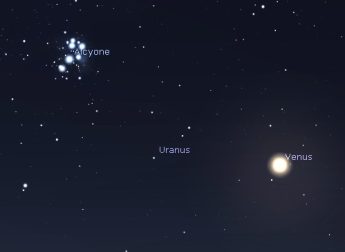This Week’s Sky at a Glance, 2025 June 28 – July 5
This Week’s Sky at a Glance, 2025 June 28 – July 5
Monday is International Asteroid Day, an annual event sanctioned by the United Nations in 2016 to raise awareness of the potential hazards and benefits of asteroids. On June 30, 1908, a 60-metre wide stony asteroid (or a somewhat larger comet) exploded at an altitude of eight kilometres over the sparsely populated region of the Tunguska River in Siberia, about 700 km northwest of the northern tip of Lake Baikal. At 7:17 am local time a tongue of flame split the sky, followed by loud bangs, ground-shaking tremors and a hot wind of hurricane force. A seismic event was recorded 900 km south, and a microbarograph in England recorded a pressure event five hours later and again a day after that.
Expeditions were led two decades later by Leonid Kulik to locate and interview eye witnesses and to locate the crater and meteorites. No crater or meteorites were found, but there was an area of 2100 square kilometres where trees were blown down in a radial pattern. Those trees in the middle of the destruction remained standing with their limbs stripped.
To celebrate Asteroid Day try to locate the brightest asteroid, Vesta, about two binocular fields left and two up from Spica. It will look like a faint star in binoculars, and a good star map will be needed to distinguish it from the background stars. The traditional method is to carefully sketch the star field and return the next clear evening to see which one has changed position relative to the others. The Heavens-Above website has wide-field and detailed inset maps, with north at the top, for the brightest asteroids. The inset map is about the size of the field of view seen with common binoculars.
This Week in the Solar System
Saturday’s sunrise in Moncton is at 5:30 and sunset will occur at 9:14, giving 15 hours, 44 minutes of daylight (5:38 and 9:16 in Saint John). Next Saturday the Sun will rise at 5:34 and set at 9:12, giving 15 hours, 38 minutes of daylight (5:43 and 9:14 in Saint John). Earth is at aphelion, its farthest from the Sun, on Thursday at a distance of just over 152 million kilometres.
The Moon is below Mars this Sunday evening and near Spica on Thursday. It is at first quarter Wednesday with the Lunar X appearing around sunset. Mercury is at greatest elongation from the Sun next Friday, setting 80 minutes after sunset. Racing eastward below the belly of Leo the Lion this week, Mars is setting around midnight. About an hour later Saturn will be rising in the east. Early in the week Venus will be within a binocular view to the right of Uranus, and by next weekend it sits half a binocular view below Uranus. With Neptune even closer above Saturn this is a good week to locate the solar system’s two ice giants. Jupiter is too close to the Sun for morning observing.
Tune in to the last Sunday Night Astronomy Show until after Labour Day at 8 pm on the YouTube channel and Facebook page of Astronomy by the Bay. The Saint John Astronomy Club meets in the Rockwood Park Interpretation Centre at 7 pm on July 5.

